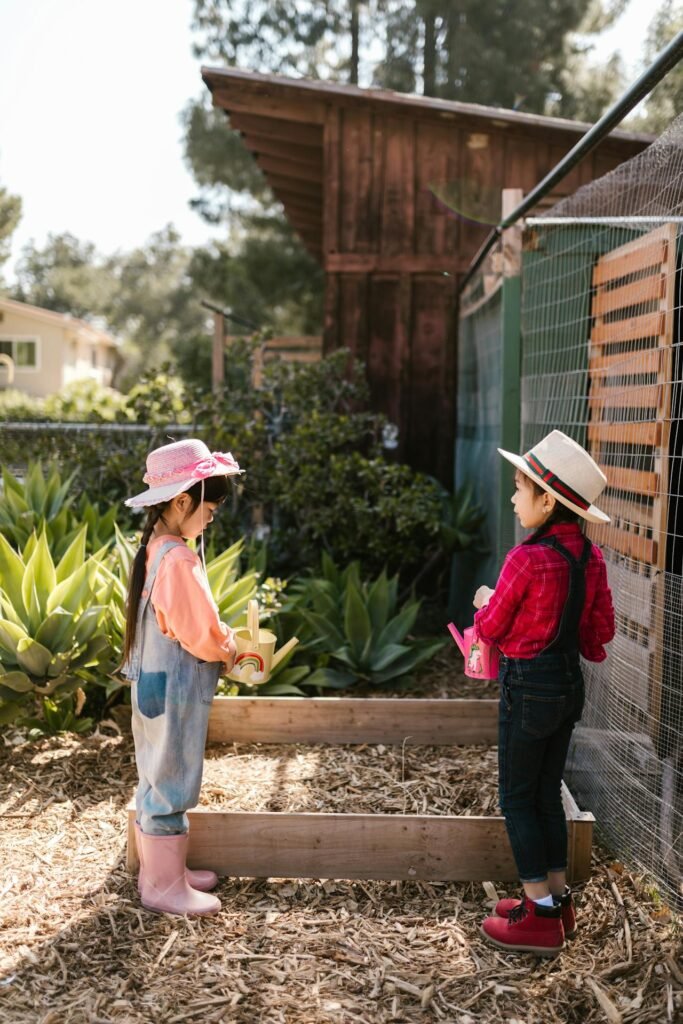Introduction
Raised bed gardening is an excellent way to grow healthy, productive plants in a controlled environment. Whether you’re an experienced gardener or a beginner, raised beds offer many benefits, including improved soil quality, better drainage, and reduced weed growth. This guide will walk you through the basics of raised bed gardening, from choosing materials and preparing soil to selecting plants and maintaining your garden for optimal growth.
1. What is Raised Bed Gardening?
Raised bed gardening involves growing plants in soil contained within a framed structure, typically elevated above ground level. These beds can be made from wood, metal, bricks, or other materials and allow for better control over soil quality and plant growth conditions.
Check the best practices about greenhouse gardening tips and tricks.
Benefits of Raised Bed Gardening:
- Better Drainage: Prevents waterlogging and root rot.
- Improved Soil Quality: Allows gardeners to use nutrient-rich soil.
- Fewer Weeds: Raised beds help limit weed invasion.
- Extended Growing Season: Soil in raised beds warms up faster in the spring.
- Less Soil Compaction: No need to step on the soil, keeping it loose and aerated.
- Accessibility: Easier to reach, making gardening more comfortable.
2. Choosing the Right Location
Picking the right spot for your raised beds is crucial. Consider these factors:
- Sunlight: Most vegetables and flowers need at least 6–8 hours of direct sunlight daily.
- Water Source: Position your bed near a water source for convenient irrigation.
- Drainage: Avoid placing raised beds in low-lying areas prone to water accumulation.
- Protection from Wind: If possible, position beds near fences or shrubs to reduce wind damage.
3. Selecting Materials for Your Raised Beds
Raised beds can be built from various materials, each with pros and cons:
Wood:
- Cedar and redwood are naturally rot-resistant and durable.
- Pressure-treated wood is an option but should be lined to prevent chemical leaching.
- Pine is affordable but may rot faster than other options.
Metal:
- Galvanized steel or aluminum can last for decades and provide a modern look.
- Heats up quickly in the sun, which can be beneficial in cooler climates.
Bricks, Concrete, and Stones:
- Durable and long-lasting.
- Aesthetic appeal but can be expensive and difficult to move.
4. Constructing Your Raised Bed
Follow these simple steps to build a raised bed:
- Determine the Size: Ideal dimensions are around 3–4 feet wide (for easy access) and 6–12 inches deep.
- Prepare the Site: Remove grass, weeds, and debris. Level the ground.
- Assemble the Frame: Securely fasten materials together.
- Fill with Soil: Use a mix of garden soil, compost, and organic matter for rich nutrients.
5. Preparing the Soil
Healthy soil is the foundation of a productive raised bed garden. A good mix consists of:
- 50% topsoil (high-quality garden soil)
- 30% compost (manure, leaf mold, or kitchen scraps)
- 20% aerating materials (perlite, vermiculite, or coconut coir)
Regularly amend soil with organic matter to maintain fertility and improve drainage.
6. Choosing Plants for Your Raised Bed
Raised beds allow for a variety of plant choices. Some excellent options include:
Vegetables:
- Tomatoes
- Lettuce
- Peppers
- Carrots
- Beans
- Kale
Herbs:
- Basil
- Mint
- Parsley
- Rosemary
- Cilantro
Flowers:
- Marigolds (great for pest control)
- Zinnias
- Sunflowers
- Lavender
Companion Planting Tip: Pair plants that benefit each other, such as tomatoes and basil, to enhance growth and deter pests.
7. Watering and Irrigation
Efficient watering ensures healthy plant growth. Consider these tips:
- Water Deeply: Encourage deep root growth by watering thoroughly.
- Use Drip Irrigation: Delivers water directly to the roots, reducing evaporation.
- Water Early in the Day: Prevents fungal diseases and water loss due to evaporation.
- Mulch Around Plants: Helps retain moisture and suppress weeds.
8. Fertilization and Mulching
Fertilization:
- Use organic fertilizers such as compost, fish emulsion, or well-rotted manure.
- Apply slow-release nutrients to sustain plant growth throughout the season.
- Follow plant-specific feeding schedules.
Mulching:
- Add a 2–3 inch layer of organic mulch like straw, wood chips, or shredded leaves.
- Helps retain moisture and regulate soil temperature.
9. Pest and Weed Management
Keeping pests and weeds under control is crucial for a thriving raised bed garden.
Natural Pest Control Methods:
- Introduce Beneficial Insects: Ladybugs and praying mantises eat harmful pests.
- Use Row Covers: Protect plants from insects and harsh weather.
- Hand-Pick Pests: Remove larger pests like caterpillars manually.
- Spray Neem Oil: A natural insect repellent for aphids and mites.
Weed Control:
- Regularly hand-pull weeds before they spread.
- Apply mulch to suppress weed growth.
- Use landscape fabric beneath the soil to block weeds.
10. Seasonal Care for Raised Beds
Adjust gardening practices based on the season to maximize plant growth.
Spring:
- Prepare soil by adding fresh compost.
- Start planting cool-season crops like lettuce and spinach.
- Watch for early pest infestations.
Summer:
- Provide shade for heat-sensitive plants.
- Water frequently, especially during dry spells.
- Harvest regularly to encourage continued production.
Autumn:
- Plant fall crops like broccoli and carrots.
- Clean out dead plants and debris.
- Add compost to enrich the soil for next season.
Winter:
- Cover beds with row covers or burlap to protect soil.
- Consider growing cold-hardy plants like kale and garlic.
- Plan for the next growing season by mapping out plant arrangements.
11. Expanding Your Raised Bed Garden
Once you’re comfortable with raised bed gardening, consider expanding:
- Vertical Gardening: Use trellises for climbing plants like beans and cucumbers.
- Square Foot Gardening: Divide beds into small sections to maximize planting space.
- Succession Planting: Replant as soon as one crop is harvested to keep beds productive.
- Extend the Growing Season: Use cold frames or greenhouse covers for year-round gardening.
Conclusion
Raised bed gardening is an excellent choice for beginners and seasoned gardeners alike. With proper planning, soil preparation, and plant care, you can enjoy a thriving garden with minimal effort. Whether you grow vegetables, herbs, or flowers, raised beds provide a versatile and efficient way to cultivate plants. Start your raised bed garden today and experience the joy of homegrown produce!


